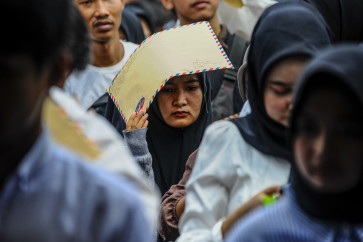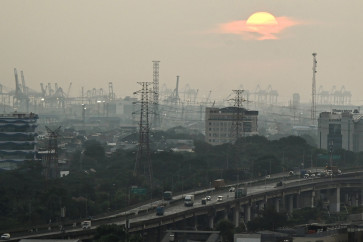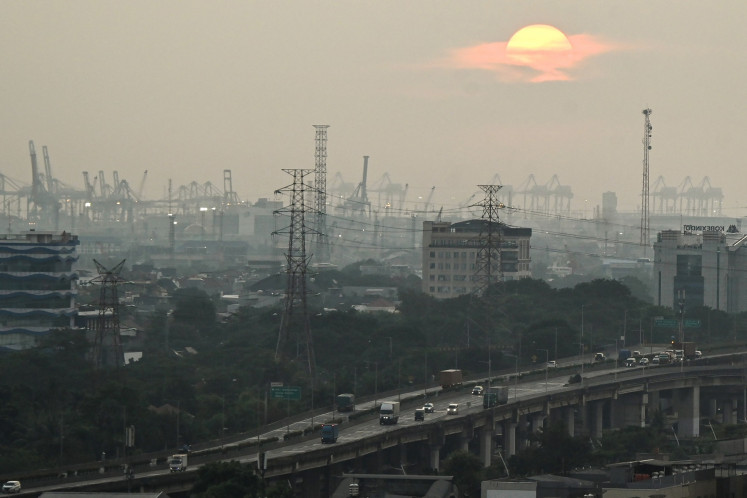Jakarta's creative industries: For arts sake
Inspired by The Jakarta Post Magazineâs The Museum Week edition, in which editor Bruce Edmond spoke about the âbeauty and diversityâ of Jakartaâs museums
Change text size
Gift Premium Articles
to Anyone

I
nspired by The Jakarta Post Magazine's The Museum Week edition, in which editor Bruce Edmond spoke about the 'beauty and diversity' of Jakarta's museums. I felt inclined to write about my own experience of Jakarta's art and creative scene, which until recently had been slim-to-none.
Start a conversation about the arts and Yogyakarta invariably pops up, so it is no surprise to learn that Indonesia recently filed a proposal to UNESCO to include Bandung, West Java; Pekalongan and Surakarta in Central Java; and Yogyakarta on its list of creative cities.
The absence of Jakarta is telling. It is all too easy in this city of malls and macet (traffic jams) to give up all hope of stumbling across inspiring spaces and instead, make do with the art dotted around Grand Indonesia, the odd bit of street art ' more often than not seen through a taxi window ' and Hollywood blockbusters
However, recently ' due to a friend being in town ' I sought out things to see and do and my, oh, my, wasn't I surprised. From a day out at Taman Mini Indah Indonesia (TMII) to stopping off at the textile and puppet museums during commutes around the city and catching an Indonesian language film I, as much as my visiting friend, was impressed by Indonesia's culture and history and was inspired by the untapped potential the country has to monetize its arts and culture industry.
I was involved in the creative industries in the UK and took art house cinema, vast galleries and affordable performance art for granted. In the UK there is a culture of funding the arts to support ' individual or collaborative ' creative practice and to utilize the arts to empower disadvantaged communities or demographics.
As such, it was no surprise that the practitioners and champions of this dynamic scene quaked in their boots upon hearing that the UK government intended to cut its arts funding. In spite of this, the arts fought back and last year for every £1 (US$1.55) of government subsidy the arts contributed £7 to gross domestic product (GDP) in the UK and overall the sector contributes the largest amount to GDP in Europe.
Indonesia's creative industries are similar to the UK's ' 14 creative sectors that include music, film, fashion, architecture and interactive gaming, with the addition of cuisine ' and it reaped the benefits of this fast-growing industry with its output accounting for 7 percent GDP in 2011. But why are there not more initiatives and government backed programs to promote and highlight the vast palate of creativity that results from the roughly 10 million residents of the capital city?
At a time of economic uncertainty ' the ending of the US' quantitative easing policy will have adverse affects on emerging economies, here in Indonesia, if growth drops to 4 percent it would be classed as a recession ' the arts, its synergy with tourism and the wealth of cultural history in this immense archipelago should be capitalized more.
I must stop here to mention that the new Jakarta Governor ' Joko 'Jokowi' Widodo ' has begun to sow the seeds of cultural celebration, with a particular emphasis on Betawi culture but Jakarta is home to transmigrants from Aceh to Papua and with them they have brought their music, dances, arts, crafts and cuisine. The benefits of promoting the creative industries could be felt by all of these diverse citizens. But there needs to be support from the government, related industries and other stakeholders in the form of funding, collaboration and mentoring.
In total there are about 74 million middle-class and affluent consumers (MACs) in Indonesia and this number will double by 2020 to roughly 141 million people. As the number of MACs increases so does the amount of disposable income, meaning individuals are more inclined to spend ' and invest ' on lifestyle choices, such as art, performances and technology. Programs could be set up to promote support of the arts domestically ' by Indonesians for Indonesians.
Despite its size ' a population of at least 240 million people living across 17,000 islands ' Indonesia is outward looking and aware of the potential of cooperation with other countries to promote and develop its creative economy.
As such, it is no surprise to learn tourism and arts are coordinated by the same ministry, the country has acknowledged the potential the two sectors, combined, have to bring economic benefit and work toward alleviating poverty.
There have been numerous memorandums of understanding (MoU) signed with countries worldwide, including one with the UK, which was signed by Tourism and Creative Economy Minister Mari Elka Pangestu in November 2012.
After discussing the subject of funding for the arts with many of my Indonesian friends the topics of corruption and 'well connected individuals' often crops up. It seems that the vibrancy and potential of the arts are somewhat forgotten in favor of lining people's pockets and giving 'jobs to pals'.
Mari says the government promotes the nation's arts in the form of businesses ' which support other industries through creative activities, such as advertising and software ' and products ' which can be enjoyed directly by end users/customers, such as performing arts and crafts. It is also committed to developing cultural parks at 25 locations across the archipelago, to inject momentum into the countries cultural economy.
Out of choice, people would choose the path that assists a route out of poverty and to become self sufficient. Make celebrating cultural history more than just wearing batik on a Friday ' make it about people being proud of, and owning, a way to celebrate all that is Indonesian while at the same time supporting themselves and their family.
I believe that more should be done to empower the citizens of Jakarta to reap economic benefit from creative activities, directly and transparently. If a small island in the northern hemisphere can monetize arts through subsidies, then the melting pot of creativity bubbling away in Jakarta has a huge potential to not only assist the lives of Jakartans, but also the economy of Indonesia as a whole.
The writer is a contributor to The Jakarta Post.









